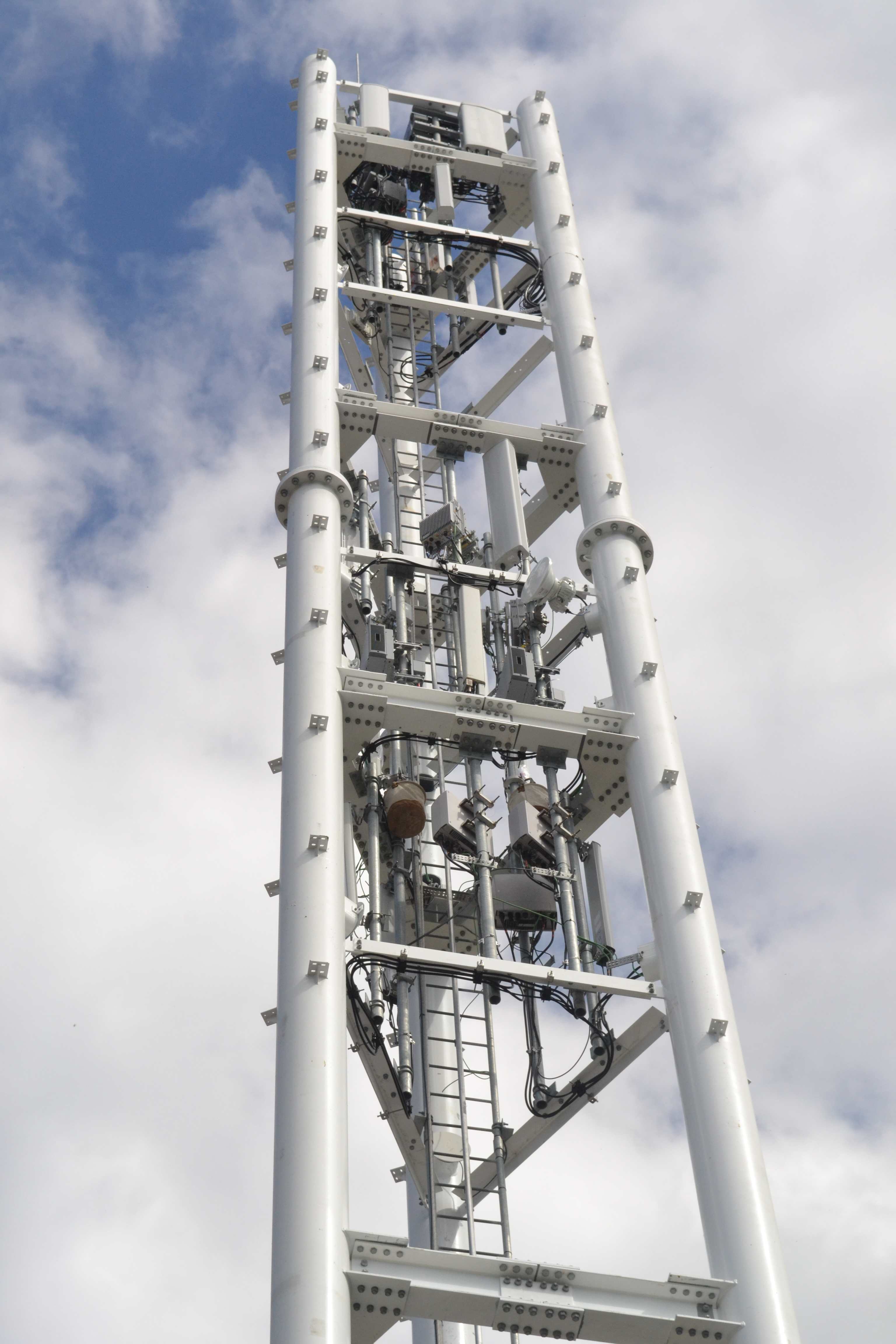Infrastructure
Mobile devices require extensive network infrastructure and hardware in order to provide mobile telephony and data services. The Base Station Subsystem makes up the “radio access network”, which connects mobile end users to the network over the air. Mobile phones first connect to the network by communicating with what are commonly known as cell towers, the Base Transceiver Station (BTS) in earlier networks and now known as an eNode-B. A number of towers are linked to a Radio Network Controller (RNC), which determines what type of service the user is trying to access and routes the signal to the appropriate destination. Connections between cell sites, RNCs, and the core network are known as backhaul and discussed further below.
The Network Subsystem makes up the “core network” of mobile voice communications, with the Mobile Switching Center (MSC) handling a variety of tasks related to switching calls (incoming or outgoing) and mobility management. Other interfaces and gateways serve to facilitate connections to corporate intranets, various media through the internet and the Public Telephone Switched Network. Information travels between local subnetworks and the core network over backhaul; insufficient backhaul connections between local towers and parts of the core network can thus create choke points for transmission. Backhaul can occur wirelessly through microwave transmissions or wired through fiber optical cables or more traditional copper and coaxial cables. While backhaul has typically been done over dedicated connections, fixed internet infrastructure for consumer use may provide an alternative resource. Improved backhaul connections are a critical part of network deployment and optimization in advanced radio access technologies like LTE. Whether the backhaul is wired or wireless, all mobile communications currently travel by wireline at some point when entering the carrier’s core network.
The original core networks of landline carriers relied on circuit-switched connections, where dedicated resources were assigned end-to-end for each conversation. With the development of internet protocols, carriers migrated to an IP-switched network that allowed dynamically assigned resources that increased capacity. Parts of the networks still retain legacy circuit-switched equipment, especially in rural areas where demands for increased capacity is low. While early technologies were highly integrated solutions across core and radio access networks, components are becoming increasingly modular and possess improved processing power. Further, the connection between mobile handsets and the radio network has been separated from the connection to the core network. Taken all together, this allows the networks (core and radio) to evolve independently from each other and helps to make networks “future proof” through easier upgrading.
While towers have primarily been spread out over larger areas, referred to as macrocells, increased traffic demand (both number of users and intensity of usage) has resulted in decreasing the area an individual cell covers. This is referred to as cell splitting but is not always possible due to interference from adjacent towers. In such instances, network operators may look at deploying small cell solutions like femtocells or WiFi offload, especially in high traffic, controlled environments such as sports stadiums, concert facilities or shopping centres that may have a very large number of people trying to access the network at once. This layered approach of different sized cells and technologies is referred to as a heterogeneous network, increasingly important to carriers in order to handle the rising demand on their networks but adds to the complexity and costs.
Much like changing usage patterns are requiring an increased physical deployment of access points for the radio network, modern smartphones are changing requirements for the network. Not only does increased demand mean that carriers need to increase capacity (bandwidth), the network has to deal with exponential growth in signaling demands — especially from smartphones. Location-based and social media apps, along with email and messaging clients, can be frequently checking with home networks for new messages in the background without any user input.
Terminals
Mobile phones have changed substantially since their introduction, as advances in electronic components and enhanced miniaturization have allowed for more sophisticated and integrated functions. Handsets have gone from being mobile telephones providing voice-only connection to multimedia, internet-enabled computers with voice communication abilities. According to CISCO, feature phones averaged 4.3MB of monthly data usage in 2011, compared to smartphones’ 150MB. CISCO projects device usage to grow to 108MB and 2,576MB (2.5GB) per month, respectively, by 2016.
All mobile handsets will share a basic architecture, including an analog module for processing speech into signals for transmission and the baseband processor that manages all the radio functions; with smartphones, a greater emphasis is placed on the applications processor – the brains for all the apps. While baseband processors have become more advanced (with dual-, tri- and quad-band chips now available for 2G and 3G networks), supporting multiple radio interfaces remains an engineering challenge. As different mobile service providers use different network technologies (eg, GSM or CDMA-based) as well as different frequencies, it is impossible for a single phone to be able to run on all networks. While national and international regulators and standard bodies attempt to harmonize, interoperability issues can limit the ability for roaming.
Roaming is the term used for when you are outside of your carrier’s network coverage but are able to access a local carrier’s network without any special modifications to your mobile phone. Both carriers need to have a roaming agreement in place and can take place when traveling abroad or within your home country. Roaming agreements are privately negotiated in North America between mobile communications providers though prices are regulated in other areas of the world, such as in Europe.
Roaming is different than “unlocking” a phone. When a phone is “locked”, the phone (generally through software but sometimes through hardware) has been modified to only run on its network or those it has roaming agreements. Unlocking the phone thus allows for users to access compatible networks from other carriers, whether in their home country or abroad. (Mobile phones can also be purchased “unlocked” from manufacturers.) Just because a cell phone is unlocked does not mean it will operate on any carrier, the baseband processor must be able to access the new network technology and frequencies. As an example, early iPhone 5’s from Canada will not run on German LTE networks, as they use different frequencies for LTE service.
As current generation handsets are often supporting 2G, 3G and now 4G technologies across various frequencies, it can almost be a lottery to see if your device will roam or run on foreign networks.
For further reading on wireless networks and handsets, see:

